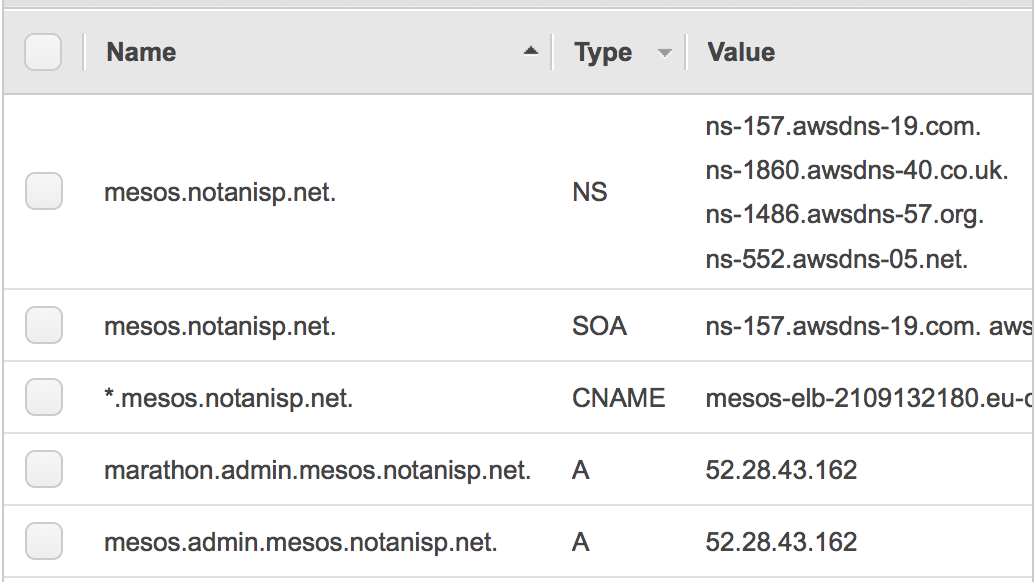See my blog post for more detailed information / walkthrough: http://bobtfish.github.io/blog/2015/04/06/diy-scalable-paas-with-terraform/
Create a file mesos.tf containing something like this:
module "mesos" {
source = "github.com/bobtfish/tf_aws_mesos"
slaves = "5"
region = "${var.region}"
admin_iprange = "${var.admin_iprange}"
admin_key_name = "${aws_key_pair.admin.key_name}"
private_subnet_ids = "${module.vpc.primary-az-ephemeralsubnet}"
public_subnet_ids = "${module.vpc.primary-az-frontsubnet}"
domain = "${var.domain}"
vpc_id = "${module.vpc.id}"
vpc_iprange = "${module.vpc.iprange}"
discovery_instance_profile = "describe-instances"
}
See the variables.tf file for the available variables and their defaults
- mesos_elb_dns_name - The DNS name of the externally facing ELB
- mesos_elb_id - The AWS id of the externally facing ELB
- marathon_api - The full URI for the marathon web interface / API
- mesos_api - The full URI for the mesos web interface
- domain - The domain under which applications can be requested
When the cluster is set up, you need to [retrieve the NS server records for your domain from route53, and add delegations to this new subdomain from the domain you own (wherever that is managed):
After which, you should be able to visit the admin interfaces at:
- mesos.admin.yoursubdomain
- marathon.admin.yoursubdomain
You can launch marathon apps using the API (or the web interface) as per this guide, and each app's PORT will be made available via HTTP at the name of the app. For example the marathon app named /www becomes www.yoursubdomain
- Currently no way to retrieve the address of the DNS servers for the Route53 zone through Terraform. Use the Console to retrieve the addresses.
- Cannot reach the log files of the Mesos slave nodes from the web interface
- Whilst the cluster we build is redundant, currently all the machines are allocated in a single availability zone.
- The machines have no configuration management (no puppet/chef), which means that making any changes to them (or getting any security updates) involves rebuilding the instances.
This module is based on the code from ContainerSolutions, and their excellent GCE howto: http://container-solutions.com/2015/04/how-to-set-up-mesos-on-google-cloud-with-terraform/
